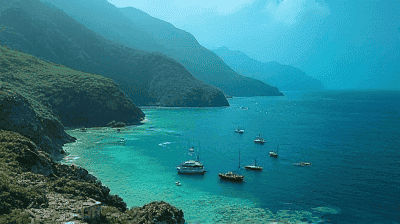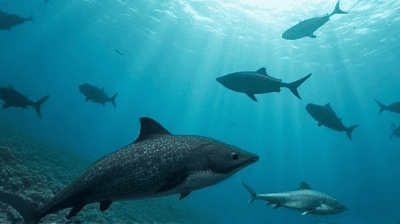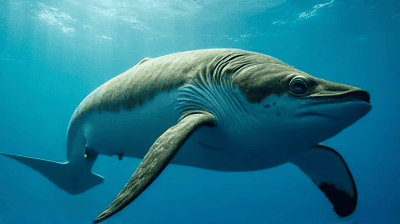
Marine ecosystems are some of the most diverse and vital habitats on our planet, providing essential services that support life both in and out of the water. However, these ecosystems face numerous threats, including overfishing, pollution, climate change, and habitat destruction. To combat these challenges, Marine Protected Areas (MPAs) have emerged as a crucial strategy for conserving marine biodiversity and promoting the sustainable use of marine resources.
Marine Protected Areas are designated regions of the ocean where human activities are restricted or regulated to protect the marine environment. MPAs can vary in size and scope, and their regulations may differ based on conservation objectives. Some areas may have strict prohibitions on activities such as fishing and drilling, while others may allow limited usage to promote sustainable practices.
MPAs can be classified into several categories based on their levels of protection and human activity allowed:
No-Take Zones: In these areas, all forms of extractive activities, such as fishing and mining, are prohibited. These zones aim to foster the recovery of marine ecosystems by allowing them to thrive without human interference.
Multiple-Use Areas: These MPAs allow for a combination of human activities while still protecting certain ecological features. For example, fishing may be permitted in specific zones, while sensitive habitats are preserved.
Seasonal Closures: Some MPAs may implement seasonal restrictions to protect marine species during critical life stages, such as breeding or migration.
The establishment of MPAs has gained traction globally, with numerous countries recognizing the need to protect their marine resources. According to the United Nations, the goal is to protect 30 percent of the world's oceans by 2030. This ambitious target highlights the increasing awareness of the importance of marine conservation and the role of MPAs in achieving sustainability goals.

Marine Protected Areas are essential for preserving biodiversity and fostering healthy ecosystems. Their benefits to wildlife include:
MPAs play a crucial role in protecting marine species and their habitats. By restricting destructive activities, these areas allow ecosystems to recover and thrive, leading to increased biodiversity.
Habitat Protection: MPAs provide a refuge for various marine species, including fish, corals, and marine mammals. By safeguarding critical habitats such as reefs, seagrass beds, and mangroves, MPAs enhance the resilience of marine ecosystems.
Increased Species Populations: No-take zones within MPAs can lead to significant increases in the abundance and diversity of marine species over time. Research shows that fish populations often double or even triple in protected areas due to reduced fishing pressure.
Healthy marine ecosystems are essential for maintaining the balance of oceanic life. MPAs contribute to this health in several ways:
Natural Restoration: Protecting marine areas allows ecosystems to recover from damage caused by human activities. For example, coral reefs in no-take zones can rebound from bleaching events and other stressors when given time to regenerate.
Enhanced Resilience to Climate Change: MPAs enhance the resilience of marine ecosystems to climate change by preserving genetic diversity and providing safe havens for species. Healthy ecosystems can better withstand the impacts of rising sea temperatures, ocean acidification, and other climate-related stressors.
Many marine species face the threat of extinction due to habitat loss, overfishing, and climate change. MPAs provide critical protections for these vulnerable species:
Breeding and Nursery Grounds: MPAs often serve as important breeding and nursery areas for fish and other marine organisms, providing safe spaces for young individuals to grow and develop.
Habitat for Endangered Species: MPAs can specifically target the protection of endangered species, including sea turtles, manatees, and various shark species, ensuring their survival and recovery.
In addition to their ecological importance, Marine Protected Areas also provide significant economic benefits, particularly for local communities. These benefits can be categorized into direct and indirect economic advantages:
Fisheries are often the backbone of coastal economies, providing livelihoods for countless communities. MPAs can enhance fisheries management and sustainability:
Increased Fish Stocks: By protecting specific areas, MPAs contribute to the replenishment of fish populations. As fish stocks increase within MPAs, this can lead to greater catches outside their boundaries, benefiting local fishers.
Improved Fisheries Management: MPAs can support sustainable fishing practices by allowing for regulated fishing zones that prevent overfishing and promote long-term resource management.
Ecotourism has emerged as a significant sector within marine economies, providing sustainable livelihoods while promoting conservation.
Attracting Tourists: Healthy marine ecosystems attract divers, snorkelers, and wildlife enthusiasts. MPAs serve as prime locations for ecotourism activities, generating income for local businesses, hotels, and tour operators.
Local Job Creation: By promoting sustainable tourism initiatives, MPAs can create job opportunities for local communities. Coaching, guiding, and hospitality services can thrive in regions where marine conservation is prioritized.
Healthy marine ecosystems contribute to coastal protection, enhancing the economic value of MPAs:
Natural Barriers: Coral reefs and mangrove forests act as natural barriers against storms and erosion, protecting coastal infrastructure and communities from damage.
Reduced Economic Losses: By mitigating the impacts of coastal erosion and flooding, MPAs can help prevent economic losses related to property damage and infrastructure repairs.
Marine Protected Areas can enhance communities' resilience to economic shocks, such as those caused by climate change or market fluctuations:
Diversified Income Streams: By promoting ecotourism and sustainable fisheries, MPAs provide alternatives to traditional livelihoods, allowing communities to adapt to changing economic conditions.
Long-Term Economic Stability: The sustainable management of marine resources ensures that local economies can continue to thrive in the long run, benefiting future generations.

The success of Marine Protected Areas relies heavily on the involvement and support of local communities. Here are ways in which communities can contribute to the management and effectiveness of MPAs:
Engaging local communities in decision-making processes ensures that MPAs align with their needs and values:
Co-Management Models: Collaborative governance models that involve local stakeholders can lead to more effective conservation outcomes. Communities can provide valuable knowledge about local ecosystems and practices.
Adaptive Management: Involving communities in monitoring and adaptive management ensures that protected areas can respond to changing conditions and challenges, such as climate change impacts.
Raising awareness about the importance of MPAs builds community support for conservation efforts:
Community Outreach Programs: Educational initiatives can inform local residents about the benefits of MPAs for wildlife and local economies. Understanding these advantages fosters greater appreciation for marine conservation.
Youth Engagement: Engaging young people through educational programs can instill a sense of responsibility for marine ecosystems and empower future generations to advocate for conservation.
Local communities should have opportunities to participate in the economic benefits generated by MPAs:
Promoting Local Businesses: Supporting local enterprises that align with conservation efforts contributes to the economic viability of communities involved in MPAs.
Participatory Tourism Initiatives: Involving locals in ecotourism ventures ensures that they benefit directly from tourism revenue while fostering community-led conservation efforts.
While Marine Protected Areas offer numerous benefits, several challenges can impede their success:
Many MPAs struggle with limited financial resources, hindering their capacity to implement effective management structures and monitoring programs.
There may be conflicts between conservation goals and local economic interests, particularly in regions dependent on fishing or tourism.
MPAs face significant challenges related to climate change, including ocean acidification, rising sea levels, and altered marine species distributions.
Enforcement of regulations in MPAs can be challenging due to limited resources and the vastness of marine areas.

Examining successful MPAs can provide valuable insights into best practices for conservation:
The Great Barrier Reef Marine Park is one of the largest and most well-known MPAs in the world. It encompasses thousands of marine species and habitats and is a UNESCO World Heritage site.
Papahānaumokuākea is a vast marine protected area that encompasses over 580,000 square miles of ocean and is home to numerous endangered species.
Cabo Pulmo National Park, located on the eastern coast of the Baja California Peninsula, is another success story in marine conservation.
Marine Protected Areas represent a crucial strategy for conserving marine biodiversity and promoting sustainable development. By safeguarding ecosystems, MPAs provide significant benefits not only for wildlife but also for local economies. Through effective management, community engagement, and strategic investments, MPAs can strike a balance between conservation and economic growth, fostering healthier oceans and resilient coastal communities.
As awareness grows about the importance of marine ecosystems, it becomes increasingly vital for individuals, governments, and organizations to support and advocate for the establishment and effective management of Marine Protected Areas. The preservation of our oceans is a collective responsibility, and by acting together, we can ensure that marine ecosystems thrive for generations to come.